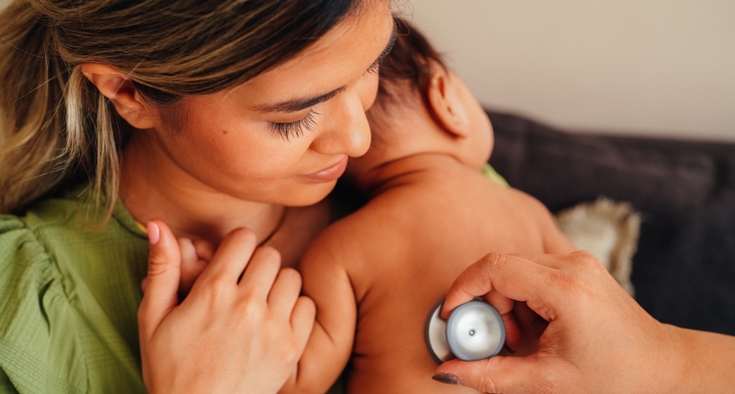The world is awash in tiny plastic particles. And scientists found an ingenious way to drive home the point earlier this year when they announced we all have the equivalent of a plastic spoon sitting in our brain.
It sounds terrible, to be sure. But what does it mean to our health? And what should we do next?

Dr. Elizabeth Kuhn, a neurosurgeon at Novant Health Brain & Spine Surgery - Kimel Park in Winston-Salem, said it’s too early to know for sure.
Microplastics, plastic particles that are five millimeters or smaller, are all around us. They’re considered potentially harmful because they carry chemicals that can leach into our air, water and food. Remember, plastics are made from petrochemicals. And they don’t break down quickly, which is why they’re so prevalent.
Still, going completely plastic-free isn’t realistic, Kuhn said. So, what can we do to limit our exposure in daily life? Kuhn shares her perspective and practical ways to protect our health.
Exceptional, personalized care for neurologic conditions.
How worried should people be about microplastic exposure?
It’s not ideal to have microplastics entering our bodies, so I’m not going to tell people how worried they should be or not. What I will say is that we don’t fully understand what it means for microplastics to be in our bodies. We don’t have a clear picture of how it’s impacting our health.
I advise anyone worried to focus on small ways to reduce the amount of plastic in their life. I’d also advise specific populations to take extra care to minimize plastic exposure – specifically, parents of young children, pregnant women, and women planning to have children.
While we don’t know the effects of microplastics at this point, today’s children will continue to be exposed to their impacts the longest. Their brains are also still developing and are particularly susceptible to any potential harm from microplastics. If anyone can benefit from reduced exposure to plastics, it’s them. The people who can take responsibility for lowering that exposure are their parents. That includes people who are preparing to become parents.
What are some examples of specific, accessible ways to reduce plastic exposure?
One of the most significant ways to reduce plastic exposure is by not microwaving food in plastic containers. Research
Other recommendations I make are to avoid using plastic utensils and cookware. A simple example is replacing a plastic spatula with a stainless steel one.
You can also consider:
- Replacing a plastic water bottle with a stainless steel or glass bottle
- Replacing plastic food storage containers with glass food storage containers
- Buying clothes that are made with natural fibers (because synthetics like polyester are made from plastic)
Don’t feel like you need to completely clean out your plastic Tupperware or throw everything made with polyester out, though. This can be a gradual process.
As research on microplastics continues to be published, how can we make sure we’re getting our information from trusted sources?
We all get our information from social media. I’m no exception to that. I’d advise anyone to remember to take what we see on social media with a grain of salt. Could it be true? Absolutely. But when we make decisions about our health, we shouldn’t rely solely on social media for information.
If you're making decisions about your health, consult a trusted primary care physician. You can also fact-check something you see on social media on a .gov or .org website, or on the website of a reliable healthcare organization, like the Centers for Disease Control and Prevention.
On the flip side, I love social media for helping me consider new angles on known health problems. For example, if you hadn’t considered plastic water bottles as a source of microplastics, you’re probably going to find a TikTok on why you should get a stainless steel water bottle instead.
We don’t know if microplastics cause cognitive decline, but that doesn’t mean it’s not essential to watch for. What are some signs of cognitive decline?
Regardless of the cause of cognitive decline, there are some telltale signs you can watch out for in yourself or family members.
These include:
- Forgetting how to do everyday tasks.
- Getting lost on your way to or from a familiar place.
- Forgetfulness or memory challenges.
We often write these things off as signs of old age, but that’s not always the case. With any of these symptoms, particularly if they’re happening at a younger age, significantly impacting your quality of life, or happening very quickly, it’s always a good idea to see a neurologist.
The concern about microplastics in our brains highlights what we can do to keep our minds healthy: Socializing regularly, engaging our brains, exercising and leading a healthy lifestyle.
How important is it for us to focus on microplastic exposure and prevention in the context of our overall health?
While microplastics are a concern, the most significant factors that determine our overall health are socioeconomic status, a healthy diet and regular physical activity.
That’s not to say a conversation about microplastics in the brain isn’t worth having. Still, if it’s a choice between enrolling your child in an exercise program and switching your Tupperware from plastic to glass, the exercise program will have a greater impact.
If you’re worried about the impact of microplastic exposure on you or a family member, you can always address your worries with your doctor or primary care physician.












